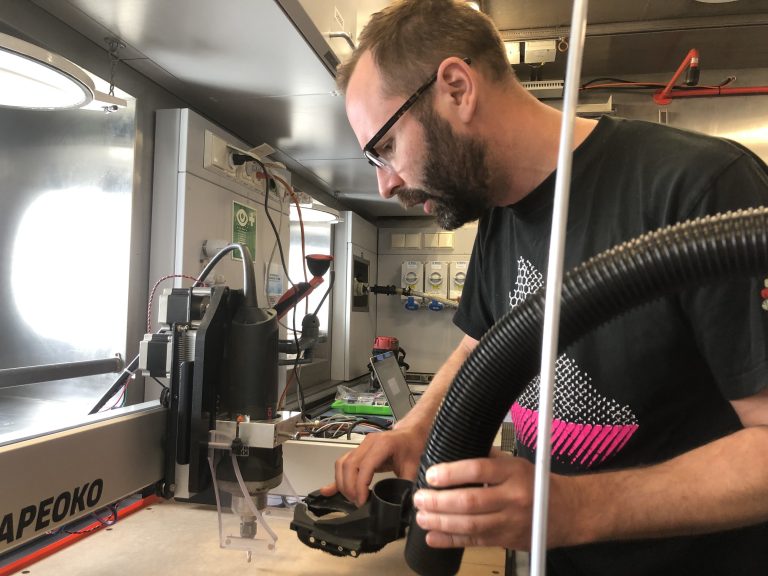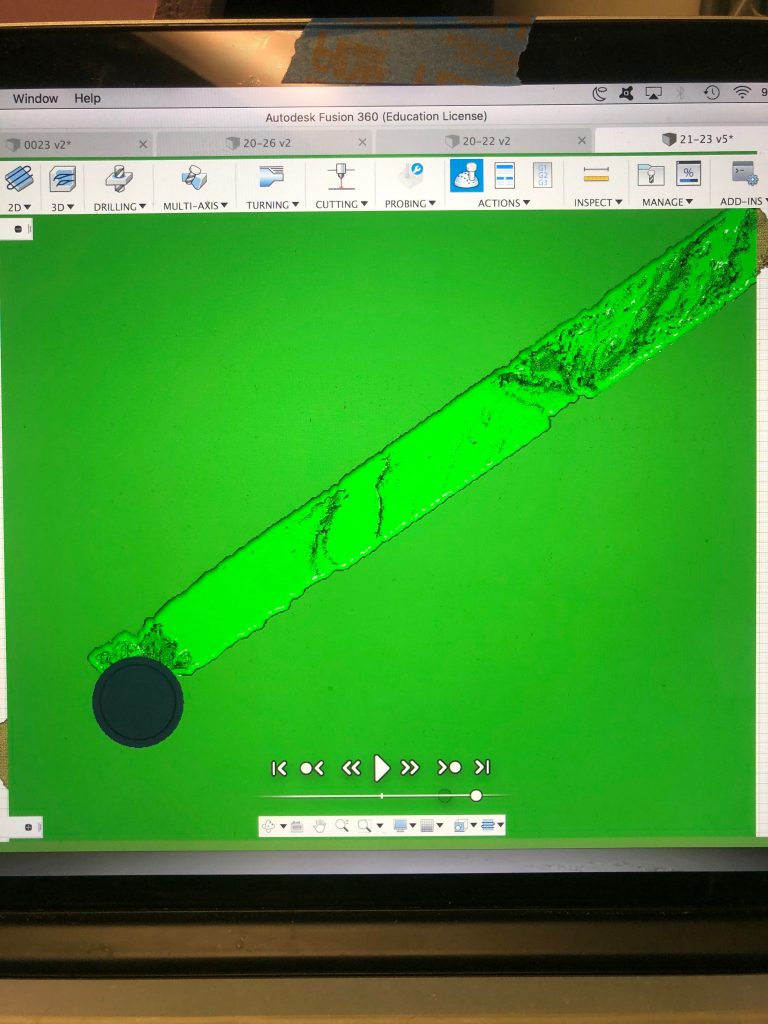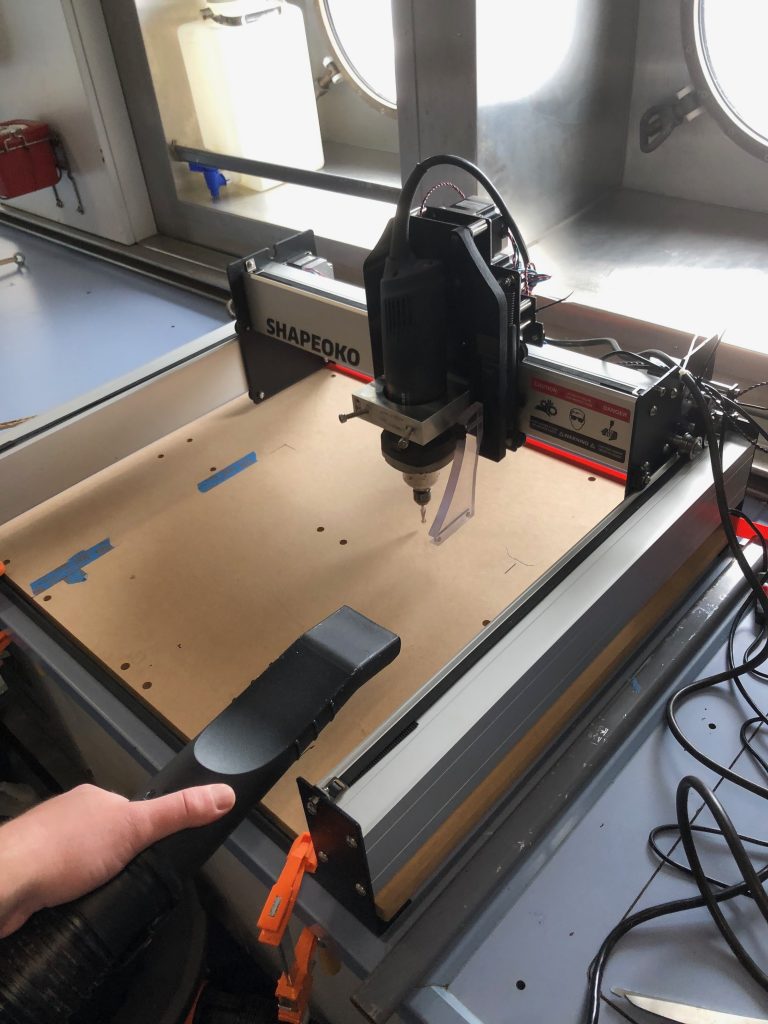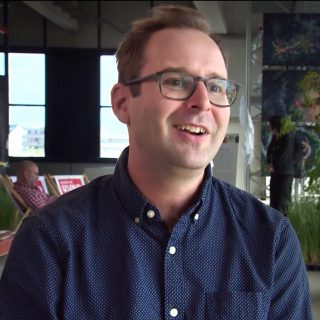My name is David, and I am currently the Artist-at-Sea aboard R/V Falkor!

The goal of my project as an Artist-at-Sea participant is to create CNC (computer numeric controlled) carvings of the seafloor that we pass over on our transit from Astoria to Honolulu. R/V Falkor is using a multibeam sonar array to scan the seafloor during the entire transit. This system essentially sends out ultrasonic pulses to the ocean floor. These pulses bounce back to the ship within a certain time. The time it takes the pulses to get back is based on the distance that they travel. Thus, each pulse gives a specific depth, collected as a data point, based on how long it takes to get back to the ship. Latitude and Longitude information is assigned to each point giving a precise location of the depth. Thousands of these points assembled together create a point cloud. Following a few steps, from this point cloud, a three-dimensional model can be derived.

I have set up a CNC machine aboard Falkor to produce carvings of these 3D models derived from the sonar data collected from the ocean floor during Falkor’s transit. The CNC machine uses stepper motors to precisely control a cutter along X (Latitude), Y (Longitude), and Z (Depth) coordinates. Using parallel passes, much like an inkjet printer, the CNC machine can carve very detailed surfaces.
The next steps are to convert the point cloud data gathered by the multibeam sonar into a 3D model file type recognized by the software used to generate the toolpath for the CNC machine. A toolpath or G-code is essentially a series of steps for the machine to follow telling it where to make cuts as it carves into the surface of the material. The CNC machine will be carving pink extruded polystyrene. I chose this material because it is easy to carve, has a nice finish, and as an artificial material, it has a strong formal contrast to the natural seafloor that is being carved.

The CNC machine has the potential to create a lot of dust while carving. Therefore, I have setup a durable and robust dust collection system for the machine.
My hope for this project is to allow people to picture the ocean floor in a whole new way. When you can watch the seafloor being carved by the CNC, you can imagine the seafloor being formed hundreds of thousands of years ago. I look forward to see how the piece evolves while at sea.

